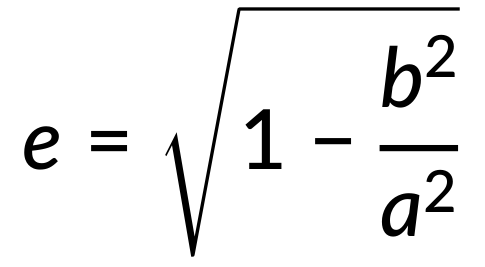14.15 : Kepler's First Law of Planetary Motion
In the early 17th century, German astronomer and mathematician Johannes Kepler postulated three laws for the motion of planets in the solar system. He formulated his first two laws based on the observations of his forebears, Nikolaus Copernicus and Tycho Brahe.
Polish astronomer Nikolaus Copernicus put forth a theory that stated a heliocentric model for the solar system. According to this heliocentric theory, all the planets, including Earth, orbit the Sun in circular orbits.
On the other hand, Danish astronomer Tycho Brahe, the employer of Johannes Kepler, had meticulously recorded the position of every planet in detail. For most visible planets, these observations were in accordance with the Copernican heliocentric theory, except for the planet Mars.
While analyzing the Mars data of Tycho Brahe, Johannes Kepler realized that the Copernican theory was accurate except that planets revolve around the Sun in an elliptical orbit rather than circular orbits. This led him to his first law of planetary motion, which states that every planet travels along an ellipse, with the Sun located at one of the ellipse's foci.
An ellipse is an elongated circle. The degree of elongation of an ellipse is expressed using a parameter called eccentricity.

An axis of an ellipse along the elongation is called the major axis a, and the one perpendicular to it is the minor axis b. Therefore, the eccentricity of an ellipse is expressed as

Since b < a, the eccentricity of an ellipse is always less than unity. For a circle, a = b, hence the eccentricity of a circle is zero.
The eccentricity of Martian orbit is 0.0935. It is considered to have the most eccentric orbit after Mercury, whose eccentricity is 0.21. Earth's orbit has an eccentricity of 0.0167.
Since planets are in elliptical orbits with the Sun at one of the foci, their radial distances change throughout the year. Their closest distance from the Sun is known as the perigee, while the farther distance is called the apogee.
This text is adapted from Openstax, University Physics Volume 1, Section 13.5 Kepler's Laws of Motion.
来自章节 14:

Now Playing
14.15 : Kepler's First Law of Planetary Motion
Gravitation
3.9K Views

14.1 : 引力
Gravitation
6.3K Views

14.2 : 牛顿万有引力定律
Gravitation
12.5K Views

14.3 : 球对称质量之间的引力
Gravitation
854 Views

14.4 : 球形物体之间的引力
Gravitation
8.3K Views

14.5 : 约化质量坐标:孤立的双体问题
Gravitation
1.2K Views

14.6 : 地球上重力引起的加速度
Gravitation
10.6K Views

14.7 : 其他行星上重力引起的加速度
Gravitation
4.2K Views

14.8 : 视重和地球自转
Gravitation
3.5K Views

14.9 : 地球表面附近重力引起的加速度变化
Gravitation
2.4K Views

14.10 : 引力引起的势能
Gravitation
5.5K Views

14.11 : 叠加原理和引力场
Gravitation
1.3K Views

14.12 : 转义速度
Gravitation
5.6K Views

14.13 : 卫星的圆轨道和临界速度
Gravitation
2.9K Views

14.14 : 圆形轨道上卫星的能量
Gravitation
2.2K Views
See More
版权所属 © 2025 MyJoVE 公司版权所有,本公司不涉及任何医疗业务和医疗服务。